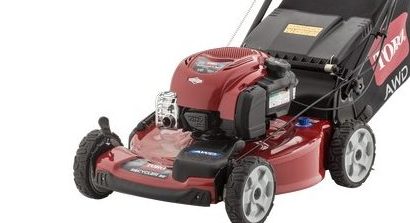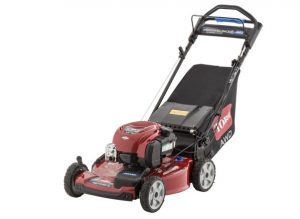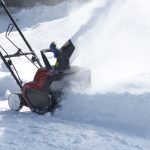It seems like every year lawn mower manufacturers are adding new features and employing new technologies to supply their customers with the best operating lawn mower. We have seen the advent of zero turn mowers as well as the introduction of self-propelled push lawn mowers. With the introduction of new technologies there may be a case when homeowners who are in the market to buy a new lawn mower may get confused when comparing machines and selecting the right one for their particular situation.
For example, do you need to buy or at least consider purchasing a self-propelled lawn mower instead of a push mower without the self-propelled feature?
Here are some things to consider if you are confused about selecting a self-propelled mower or a regular push mower.
When Should I Consider A Self-Propelled Mower?
Of course, the issue is what type of mower is best when dealing with your particular property and which is the most comfortable to use.
Plain push lawn mowers are said to be best if your property is less than a quarter acre. Cutting decks of regular push lawn mowers range from 20-inches to 22-inches so that it can efficiently and quickly give you the best results. If you are in good physical condition, then this may be the way to go. Moreover, it can save you money.
Meanwhile, self-propelled lawn mowers are ideal for yards that are as large as three-quarters of an acre. It is referred to as “self-propelled” because it actually pushes itself. This means you don’t need to put in as much human power into the task. As a result, you are less fatigued when the job is done. With a self-propelled mower you simply walk behind and guide it. These mowers feature both front and rear wheel drive (or All-Wheel Drive (AWD).
Push mowers that feature front-drive are very easy to maneuver and turn. The wheels are allowed to swivel, which allows easier 180-degree turns. Their mowers are designed to be perfect for properties that are small and yet have a number of obstacles.
Rear-wheel drive mowers have great traction on hills and better steering control than front-wheel drive mowers. In addition, it is move challenging to make sharp turns. These mowers are designed for lawns that are open and have steep hills.
If your property is larger than three-quarters of an acre, then you probably should consider using a riding lawn mower.
Choosing Features For Your Mower
The first thing you should consider as far as features for your new mower is concerned is ease of starting.
Many mowers rely on the pulling of a cord to start. Lawn mowers with electric start eliminate the chore of pulling a cord. You simply need to prime the engine and then turn a key. The starter goes on every time and there is no maintenance required.
There are mowers that feature a starting rope as well as automatic chock start. These mowers come ready to run. All you need do is engage the safety hand and pull the starter rope.
A mower with a primer starting system supplies the exact amount of gas into the carburetor to assure a quick and easy start.
Briggs & Stratton mowers include ReadyStart™, a feature that makes a choke and priming unnecessary.
Next you will want to consider what method you want your mower to use when dealing with clippings. Probably the most popular alternative is bagging the clippings. This involves catching the clippings in a bag that goes either at the rear of the mower or a side. Rear bagging mowers offers more maneuverability around trees and landscaping and bagging in general results in a fresh looking lawn every time you mow.
You should also decide whether or not you want a mulching lawn mower. This feature assures that the grass blades are cut into fine pieces and are returned into the lawn to perform as a natural fertilizer. This feature assists in enhancing the lawn and removes the need to empty the grass from a bag on a bagging mower.
Of course, a lawn mower that has the ability to end the need for raking leaves in the fall is something you will want to consider. These mowers have leaf-handling capability so they actually suck up, shred and catch leaves with a screen that goes between the cutting blade and the discharge chute.
(Next time: Lawn Mower Safety and Maintenance Tips.)








